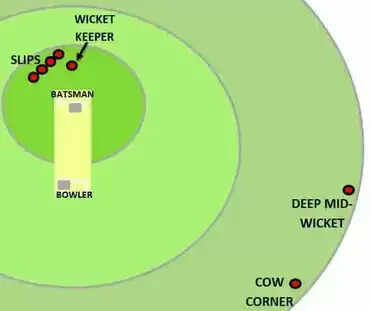Know About Cow Corner In Cricket
In cricket, another two extras are added to the total score of a batsman without being brought to account in the box score of the batter. These are "byes" and "leg byes". These occur under certain conditions during the play according to the Laws of Cricket.
A bye is awarded when the valid delivery crosses the batter without touching his bat or body, and the batters run successfully between the wickets. Such runs are included in the tally of the team as 'byes' but are not considered in the batting score of the player or the statistics of the bowler. For example, in case the wicketkeeper does not catch the ball and the ball crosses the boundary, the batting team will get four byes. If an umpire indicates a bye, he/she will raise his/her hand vertically over their head. A leg bye is run when the ball thrown by the bowler hits any part of the batsman or his body protective equipment but does not touch the hand of the batsman holding the bat. Simultaneously, runs are earned by the batsmen.

Here, for the valid run, it should be reasonable for the umpire to think the batsman was playing a shot or trying to get out of the way when the ball would have arrived to hit him. If the umpire does not think either condition is applicable, then no leg byes are called and the ball is declared dead. An umpire signals for leg byes by touching the raised knee.
Both byes as well as leg byes are recorded in the score book as extras and no batsman or bowler is credited with it. Of course, wides and no balls are the errors of the bowler, but the wicketkeeper is mainly the culprit of the byes. But the situation of leg byes comes when the ball bounces into the body of the batsman under the prevailing conditions.
Knowledge of such rules is, thus, indispensable for the understanding of the niceties of cricket scoring and the role players play on the field.








